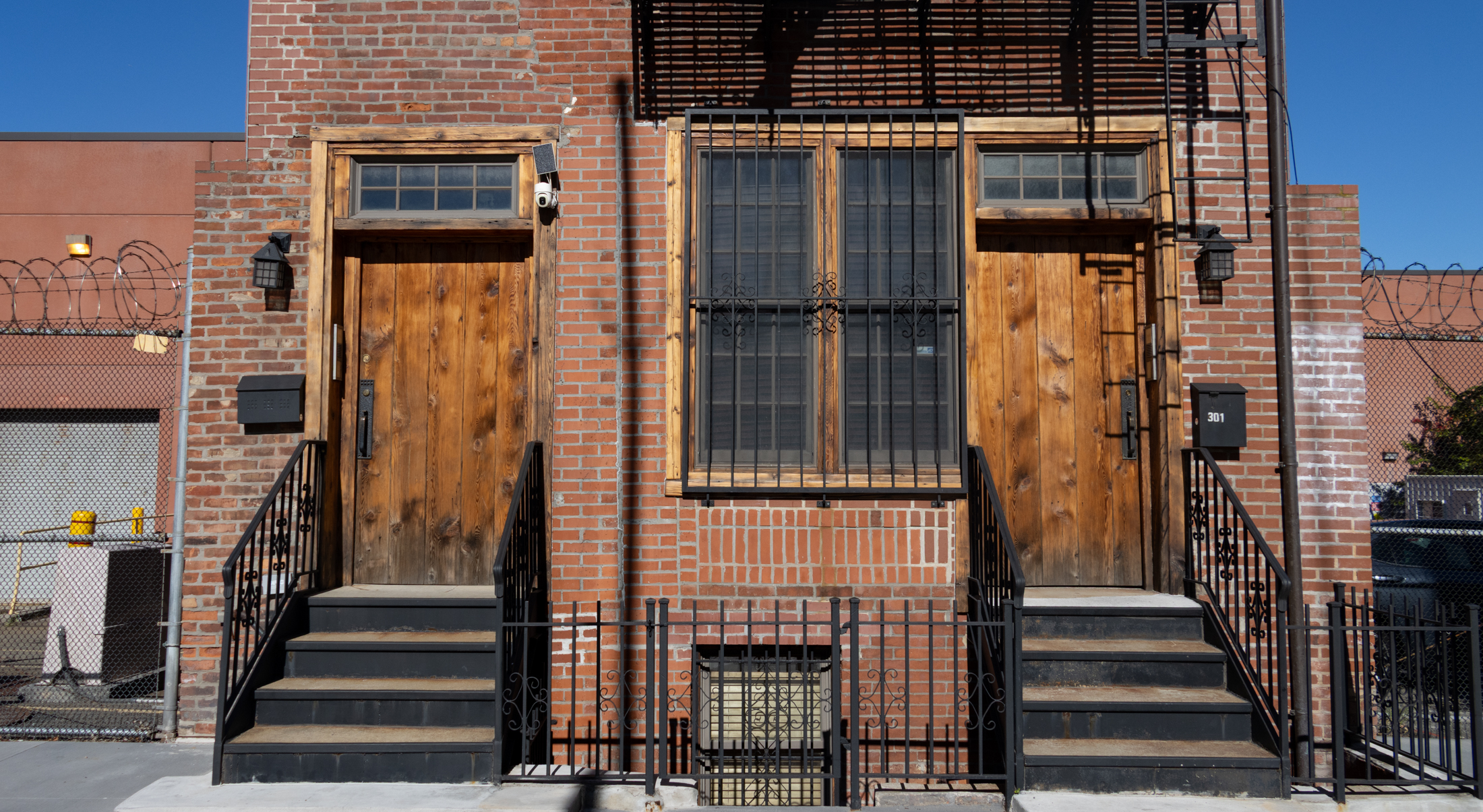Darkness on the Edge of Town
The cover story in yesterday’s real estate section of the Times is about how neighborhoods characterized by sweetness and light during the day can look sour and sleazy by night. Brokers say a lot of people—renters more often than owners—end up hating their hoods after dusk, either because they seem dangerous or because they’re too…


The cover story in yesterday’s real estate section of the Times is about how neighborhoods characterized by sweetness and light during the day can look sour and sleazy by night. Brokers say a lot of people—renters more often than owners—end up hating their hoods after dusk, either because they seem dangerous or because they’re too hopping or too dead. Although the bulk of the story focuses on Manhattan locales, there’s mention of a young Bushwick renter who was robbed at 4 a.m. and who immediately moved to Williamsburg after her lease expired. Issues of crime aside, a lot of Brownstone Brooklyn neighborhoods are known for being pretty sleepy at night (which, of course, is occassionally equated with greater menace). Has a neighborhood’s nighttime scene—or lack thereof—ever caused you to move?
Day and Night [NY Times]
Photo by Betty Blade.





No such thing as stray bullet in BayRidge..those bullets are intended for specific victims.They “hit” the intended target most of the times.
Subprime mortgage slipping into default at rapid pace
By Shannon D. Harrington and Mark Pittman
Bloomberg News
Monday, October 8, 2007
NEW YORK: Subprime mortgage bonds created in the first half of 2007 contain loans that are going delinquent at the fastest rate ever, according to Moody’s Investors Service.
The average rate of “serious loan delinquencies” in the securities has been higher than 2006 bonds, Ariel Weil and Amita Shrivastava, analysts at Moody’s Investors Service, wrote in a report last week. Serious loan delinquencies are those 60 days or more past due, including properties in foreclosure or already foreclosed upon.
“It is shocking what you see,” said Kyle Bass of Hayman Advisors, a hedge fund based in Dallas that has profited from its bet that the U.S. housing market would fall. “Anything securitized in 2007 has got to have the worst collateral performance of any trust I’ve seen in my life.”
Moody’s, Standard & Poor’s and Fitch Ratings have been downgrading subprime securities issued in 2006 as defaults on the underlying loans rise to record highs. Fitch said last week that it was now reviewing ratings on bonds created in 2007.
Moody’s has cut ratings or placed on review 496 bonds backed by first mortgages issued last year, or 3 percent of such bonds created in 2006. Through Sept. 21, S&P had cut ratings on 433 securities from last year and backed by subprime loans, or 9.1 percent of the total. Fitch last week cut ratings on $18.4 billion worth of bonds backed by subprime loans.
Moody’s said 6.3 percent of the loans in bonds issued in the first half were seriously delinquent four months after their securitization. The rate was 4.2 percent after four months for bonds created last year, and 4.5 percent for 2001 bonds.
“We see this as a continuation of the trend we had in 2006,” said David Teicher, a managing director at Moody’s.
“We’re studying it, looking at the vintage carefully, as we are with all of the other vintages.”
The Moody’s report last week compared with research from S&P in March that said 2006 bonds might be the worst-performing ever.
For bonds older than six months, 2006 was the worst year for serious delinquencies since at least 2000. Data in the Moody’s report suggest that accelerating delinquencies from 2007 bonds are likely to eclipse 2006.
Foxtons declares bankruptcy
Foxtons, a discount real estate agency based in New Jersey that pioneered selling homes at a 3 percent commission, joined mortgage lenders as a victim of the declining U.S. housing market and filed for bankruptcy protection.
Foxtons, which operated real estate offices in New York, New Jersey and Connecticut, filed for Chapter 11 bankruptcy protection last week in Trenton, New Jersey. The company listed debt of $480,944 and assets of $2.6 million in documents filed in U.S. Bankruptcy Court. Last month the real estate agency laid off 350 of its 380 employees.
Foxtons joins mortgage lenders like American Home Mortgage Investment and New Century Financial that filed for bankruptcy. The National Association of Realtors has forecast that this year will show the first national decline in the U.S. median home price since the Great Depression.
Chapter 11 of the bankruptcy code allows a company to reorganize its business while being protected from creditors.
The company was part of Foxtons Ltd. until this year, when the parent company, which is based in London, accepted a buyout offer from BC Partners. The founder of Foxtons Ltd., Jon Hunt, retained the U.S. branches as part of the transaction.
i’m hoping to god 12:16 was meant to be sarcastic.
The irony of course is that the NYT article was mainly about how supposedly desirable hoods (The UES Gold Coast fer cryin’ out loud) turned out to be undesirable for people who wanted to socialize. Nothing to do with crime, noise, teens, drug dealers, etc.
OK, so they mentioned Bushwick. Big deal. They could have talked to all you bstoner commenters but then that would have been a different article wouldn’t it?
At least in Bay Ridge there’s no risk of getting hit by a stray bullet, as in Crown Heights.
I moved from Bay Ridge a few years ago and thank God I did. Young teens driving their parents car at night, blaring awful rock music eating pizza ,drinking beer and puffing on cigarettes while sitting on the hood of the cars,the girls with that awful smacking of gum so loud it woke the dead,other idiotic teens skateboarding all hours of the night,hearing ouch every time they fell off the board.So glad I moved after my lease expired cause I didnt check out the nabe at different hours and was it ever an eyeopener.
Banking
Credit Crunch Whacks WaMu
By Laurie Kulikowski and Mark DeCambre
Staff Reporters
10/5/2007 8:55 AM EDT
URL: http://www.thestreet.com/newsanalysis/banking/10383000.html
Washington Mutual (WM) predicted a steeper-than-expected decline in third-quarter earnings, becoming the latest bank to assess the damage done by the collapse of the market for mortgage-backed securities and this summer’s credit crunch.
The Seattle-based bank said profit for the quarter ended last month will fall 75% from a year ago, when Washington Mutual made 77 cents a share. A decline of that magnitude would put the bank’s earnings at 20 cents a share — well short of Thomson Financial analysts’ mean estimate of 58 cents.
Washington Mutual said results will be weighed down by a $975 million provision to its loan loss reserves, reflecting ongoing weakness in the housing market. WaMu said its net charge-offs will be $550 million for the quarter.
Washington Mutual also took a $150 million writedown on the value of held-for-sale mortgage loans, a $150 million loss in its trading portfolio and $110 million of impairment losses on its mortgage-backed securities portfolio.
“While we’re disappointed with our anticipated third-quarter results,” said CEO Kerry Killinger, “we look forward to an improved fourth quarter as we continue to see good operating performance in our Retail Banking, Card Services and Commercial Group businesses.”
Killinger said WaMu “continues to have the liquidity and capital necessary to grow the company’s businesses and support its current dividend.”
TheStreet.com Ratings reported in August that WaMu could face serious liquidity problems amid a sharp downturn in its bread-and-butter home mortgage business.
Earlier this week, Citi (C) , UBS (UBS) and Deutsche Bank (DB) posted steep losses tied to their holdings of mortgage-backed securities and leveraged-buyout loans.
WaMu fell 28 cents to $35 in premarket trading.
I moved from Fort Greene to Carroll Gardens in the late 80s. Unfortunately at that time drugs were on the upswing (crack) in FG. Had adicts sleeping in the apartment building hallways and fellow residents were mugged in the mailroom and elevators on a daily basis. Carroll Gardens at that time was so quiet, safe and sleepy. None of the bars, restaurants, and shops that are now on Court Street and Smith were there.
How things change.
Interestingly, one of the streets they showed to illustrate the Times article was East End Avenue in Manhattan. My daughter goes to school there and I’ve often been there in the evening, and it certainly is quiet. But I think that’s precisely what attracts people to that part of Manhattan. Ditto Sutton Place, which was also featured in the article. I haven’t heard of anyone living on East End Avenue or Sutton Place complain that it’s “desolate” or dangerous at night.
Granted, some people’s peaceful is other people’s desolate, and the issue is different in more marginal areas than Sutton Place. I’ve never moved anywhere in NYC, whether I rented or purchased, without checking out the neighborhood at different times of the day and night, both during the week and on the weekend. It’s just common sense. You want to know how you’ll feel walking home from the subway late at night, or whether there’s noise at all hours on the weekend, or whether there’s a sense of community during the day. Live and learn, I guess.